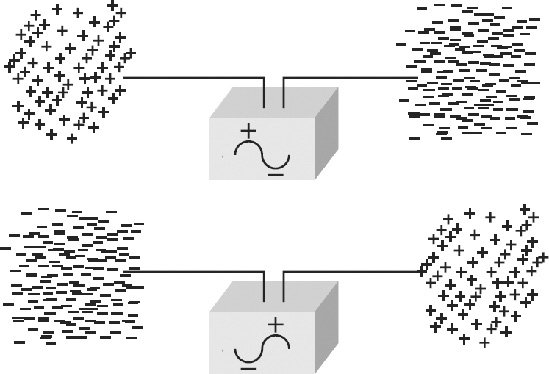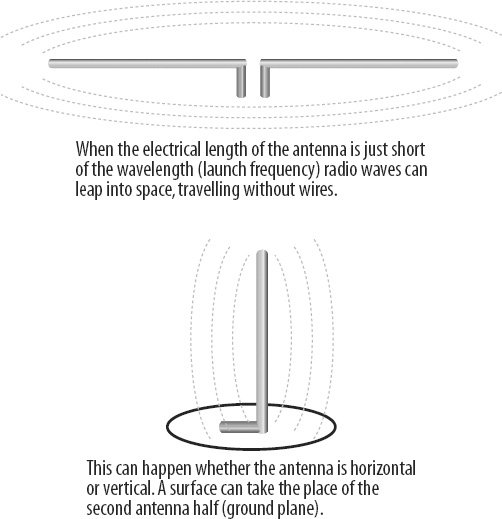Section 10.3. How Wireless Works
10.3. How Wireless WorksWhen a magician suspends an assistant in thin air, it has a way of getting the audience's attention. There is something counterintuitive about seeing someone apparently defy the law of gravity when you spend your entire life learning to obey it. Wireless is like that. It follows its own rules and conforms to its own logic. A top-rated world-class antenna engineer once confided to a friend of mine, a lowly Navy technician at that time, that he really didn't truly understand how antenna systems actually worked, and doubted if anybody did. However, that didn't permit him to give up and change jobs: people were depending on him. He had to stick with it, even when in his heart of hearts, he knew that much of his success was by luck. Fortunately, while the advanced parts of wireless are sheer mystery, the basic bits are understandable enough, once you've been properly introduced. If you know this, you will be prepared to deal with an emerging round of hacks and countermeasures. Just as the script kiddies don't usually have a clue how things work, many wireless crackers will be just as in the dark. If you know what is actually taking place, you will be better able to outwit them. We will now look at wireless security starting with the business end, the radios and antennas. Both wired and wireless network communications work on the same principles. When electrons flow through a wire, they cause the creation of electromagnetic fields around the cable, as you can see in Figure 10-2. Figure 10-2. Creation of electromagnetic field around cable If you now shoot a current flow into a cable that does not connect to anything, but simply ends, the electrons of the current flow tend to accumulate until they reach a charge equal to or exceeding whatever force propelled them down the cable in the first place. At this point, the accumulated charge starts to swim back upstream towards the source and may even oscillate back and forth a few times until the charge ends up evenly spread over the length of the conductor. If the exciting voltage is pulsed or alternated in polarity, it becomes possible to set up a pattern of waves in the conductor as charges are pushed to the end of the wire and bounce back. As the electrons surge back and forth, the electrical and magnetic field surrounding the wire ebbs and flows as well. (See Figure 10-3.) Figure 10-3. Accumulation of charge at the end of an unterminated piece of cable If you adjust the length of the wire, which is called an antenna, to a length that is just right, a launch effect occurs (see Figure 10-4). The electric fields essentially step off the wire and travel through the fabric of space, theoretically going forever, except they decrease in power or intensity with the square of the distance from the launch point. Figure 10-4. Cut to the correct length, the wire becomes an antenna and launches electromagnetic waves into space In the period of just over a century that this effect has been recognized, people have learned much about how to control it and put it to good use. For instance, early on it was discovered that the orientation of the antenna at launch determined the orientation of the wave as it traveled through space. For convenience, these orientations are called horizontal polarization and vertical polarization, although many other combinations are possible, including circular and elliptical polarizations, and even mysterious shifting polarizations used for some radars, that appear to have the ability to hide radiation. (Radio waves are a form of nonionization radiation.) A horizontally oriented transmitting antenna will be most effective if it is received by a horizontally oriented receive antenna, and will be least effective when received by a vertically oriented one. Understanding antenna polarity and knowing that radio waves sometimes change polarity as they pass through or bounce off of various materials and structures helps explain how sometimes shifting the antenna orientation just a little can dramatically improve the performance of an antenna systemor the ability to better reject certain interference (see Figure 10-5). Figure 10-5. Observing correct polarity can help maximize antenna performance |
EAN: 2147483647
Pages: 121